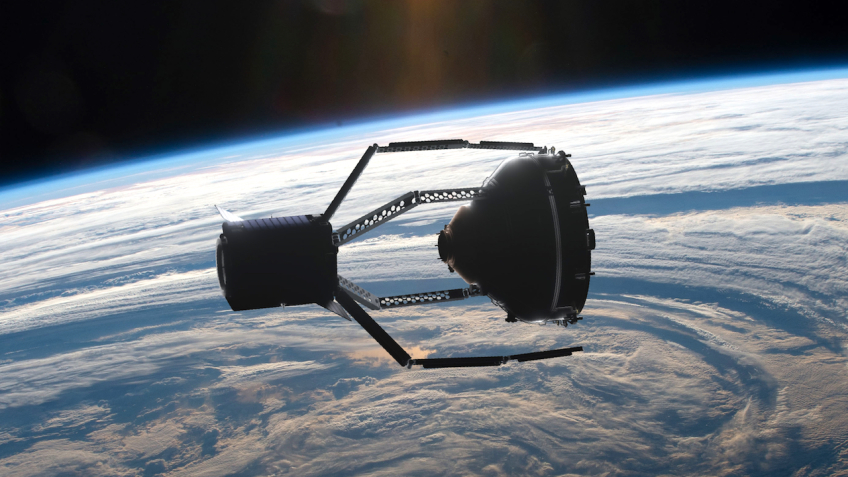
You are not mistaken. I’m inspired by Aerosmith’s “Dream On,” a classic rock song that has been played at many big public events. How can we not dream? The poor dream of the days when they own a warm shelter and have food on the table every day. The rich dream of an easier way to realize self-worth and safeguard established success. As a concerned global citizen, after watching on TV President Biden rejoin the Paris Agreement with the stroke of a pen and reliving the teary moment of VP Kamala Harris’s swearing-in at the inauguration ceremony, I feel energized to dream of a diverse and sustainable planet.
If we learn to dream, we will find our way to solve problems. If we learn to dream, we will conjure hope to make our social-distancing days count.
We are living on a planet full of discards. On land, we’re disposing of billions of tons of junk into landfills with capacity shrinking annually. At sea, plastic proliferation is seen in every nook and cranny, even the deep sea creatures in the world’s deepest Mariana Trench are found eating plastic. With rapid technology advances, space exploration is no longer an exclusive activity of one country. The “out of sight out of mind” mindset is harmful to our awareness of landfill problems. We don’t see the problem but it does not mean the problem is not there. If we don’t reduce and recycle municipal solid waste at the source, overconsumption in the market economy only will soon decrease the capacity of landfills and increase greenhouse gas emissions. Frankly, mankind is living with the consequences like frogs gradually boiling to their death.
Likewise, strong countries are competing in space exploration. Whenever they launch satellites and rockets, they litter in space. All the debris is traveling at a speed that is ten times faster than a bullet, creating destructive heat and power. As a result, space junk will become an increasing hazard to active satellites and spacecraft. It’s likely for us to see a real-life star war taking place with satellite collisions.
As Benjamin Franklin quipped, “An ounce of prevention is worth a pound of cure.” It’s thrilling to see two new developments of space trash cleanup underway. The European Space Agency has signed a US$ 102 million deal with a Swiss start-up to launch a special satellite by 2025 in order to snatch pieces of space debris in the Earth’s orbit. In East Asia, a Japanese company and Kyoto University have joined forces to develop the world’s first satellite made of wood by 2023. Wooden satellites would burn up without releasing harmful substances into the atmosphere or raining debris on the ground when they plunge back to Earth. Well, if you are a sci-fi lover, dream on!
These are good examples of public-private partnership, also known as 3P. It’s natural for business owners to cut costs and maximize efficiency and for governments to take the least risks and maximize the impact of policies and programs. Private sector has its own advantage of maximizing results with a low cost while public sector is unique in ensuring equitable distribution of goods and services. 3P is a desirable marriage for people and planet to make amends in the face of environmental degradation.
Regardless of nationalities and the size of businesses, corporate social responsibility (CSR) to companies is like a civic duty much like paying taxes is to individuals. Companies with CSR outlast those that don’t. Think about Andrew Carnegie and his steel empire at the turn of the 19th century. His notable The Gospel of Wealth (1889) illustrated the responsibility of philanthropy by the richest 1%. Sadly, our world is becoming more unequal in distribution of wealth, healthcare, education and natural resources. According to Oxfam, an international nonprofit organization, 82% of the wealth generated globally in 2017 went to the richest 1%, while half the population struggled on less than $5.50 per day. And COVID-19 is exacerbating the gap between rich and poor. So are Internet of Things and technology. Well, if you are a policymaker with ambition, dream on!
One of the exciting aspects of dreaming is prepare yourself for new experience. I remember in my youngster years attending the bi-annual Canton Fair and book fairs everywhere made me feel like a kid in a candy store. A reading pen which is an old technology now caught exhibitors’ eyeballs in those days. A laser wood cutter could realize your dream of building a treehouse with precision. Even in pre-covid years, my every visit to the Home Depot was never disappointed. Entrepreneurial ingenuity is a crystal ball for the future. Recently, the Singapore Food Agency has given regulatory approval for lab-grown chicken meat, making the country the first in the world to give its go-ahead to chicken meat that does not come from slaughtered animals. Founded in 2011, East Just Inc., a San Francisco-based start-up, will apply animal cell culture technology to the development of food products. Whether it is cell-cultured chicken or plant-based meat options such as Beyond Meat and Impossible Foods, if you are game for new experience, new lifestyle, or even better, for an exchange of a heathier environment and yourself, plant-based diets can be as tasty and diverse. Well, if you are a gourmet with imagination, dream on!
E-commerce and social media tools bring us convenience and efficiency but it is the offline experience that will make our living whole. It’d be a nightmare if the real-life social networking dies in social media software when people spend more time online than offline. Yes, we can find almost everything online but not everything online defines who we are. I like to analogize that experience of the difference between home-made coffee and a cup of coffee prepared specially for you at a café. If you are a practitioner of experimentalism and mindfulness, dream on!

I don’t know since when the food labeling began listing the calories intake of every ingredient. If we can quantify calories and inform consumers, why not we do the same to inform customers about their carbon footprint on their purchased goods and services? A carbon footprint is the total greenhouse gas (GHG) emissions caused by an individual, event, organization, service, or product, expressed as carbon dioxide (CO2) equivalent. To parody a known saying, in the face of climate crisis, we need to do as the French people do. We need action to fulfil the Paris Agreement. Time does not wait. One Celsius degree of global warming matters a lot, especially to coastal communities and low-lying countries. For some species, it literally means life or death.
We need dreamers to promote 3P and partnerships of all capacities and formats. At the heart of the Paris Agreement, Nationally Determined Contributions (NDCs) are the achievement of long-term climate action goals set by member states. By the end of 2020, 71 countries submitted new NDCs. The most ambitious submissions included the EU, which agreed to slash the EU’s GHG emissions by at least 55% from 1990 levels by 2030, a significant improvement over the EU’s previous pledge of at least a 40% reduction by 2030. Colombia committed to a 2030 emissions cap nearly 37% below its previous unconditional target. Many smaller countries, including Kenya, Jamaica, Fiji, and Grenada have also stepped up. And it’s noteworthy that the U.S. has rejoined the Paris Agreement under the Biden Administration. Dubbed “climate czar,” Secretary John Kerry was named as climate envoy for national security. Combating climate change is to be elevated as a national security priority. As Kerry told the press, “[curbing climate change] can be the greatest economic transformation in global history.”
Dreaming is the easiest, free exercise everyone can do. Live the life of your dreams, or at least do your best to get near your dreams. That is the purpose of life. Dream on.
“Historically, pandemics have forced humans to break with the past and imagine their world anew. This one is no different. It is a portal, a gateway between one world and the next.”
—Arundhati Roy, Indian author
